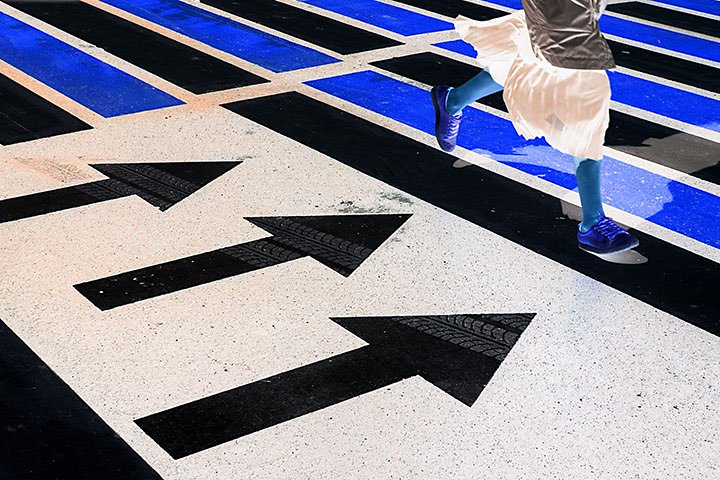Invert colors to create intriguing effects.
Discover what happens to a photo when you invert the image colors, and learn how to create the effect for yourself.

Explore color inversion.
Color inversion traces its roots to analog photography. Inverting a traditional black-and-white film negative turns the dark areas light, transforming the negative into a recognizable image.
With digital photography, color inversion is now mainly used to create a fun aesthetic. Plus, the process for inverting photos in Adobe Photoshop is simple, making it a quick way to create unexpected imagery.


What happens during color inversion.
Compare black and white to color.
When you invert a black-and-white photo, the white pixels become black pixels. But if you invert a color image, the inverted photo will have a flipped color scheme. Photoshop will flip every color to its opposite on the RGB or CMYK color wheel. This means a vivid blue ocean becomes bright orange and a lush green field becomes magenta.

Create imaginative art.
Inverted photos show an image of the world, but in a totally unexpected way. This makes them perfect for abstract photography, photo collages, and fine art. They can also evoke a spooky, creepy, or mysterious atmosphere, making them great for Halloween aesthetics.
Rework film negatives.
You can also use the Invert tool in Photoshop to transform your black-and-white film negatives into recognizable photos. With this process, you can adjust a photo like you would in the darkroom, but without all the chemicals. Use a scanner or digital camera to capture the negative you want and follow the steps below to invert the grayscale image and perfect its contrast and brightness.
How to invert your photos.
You can invert colors in Adobe Photoshop for many creative purposes. Follow this tutorial to invert colors in any image.
1. Open the image.
Go to Photoshop and open your photo file.
2. Add a new Invert Layer.
To add a new layer, click into the Layers Panel, and then choose Invert from the drop-down menu. You can also create this window by choosing Layer › New Adjustment Layer › Invert from the top menu bar. This immediately flips all the colors in the image.
3. Create dimension.
Simply inverting the photo can make the colors look flat. To fix this, go to Layer › New Adjustment Layer › Levels. From there, you can adjust the Levels sliders to add dimension. You can also add and adjust a Brightness/Contrast layer to make the image high contrast.
4. Adjust your levels.
View your histogram to get a sense of your full tonal range. Move your Shadows, Midtones, and Highlights sliders to add the final adjustments to your photo. From there, you can easily save your photo as a PNG, SVG, or JPG.

Take your photos further.
Photo inversion is a simple, fun way to create unique images, but you can also combine effects to make something truly unexpected. Use your inverted photo to create a double exposure and push your artistic vision into a whole new abstract world.
Or you can swap the colors in your photos and then invert the images. This will make your inverted colors appear even more mysterious. With the tools in Photoshop, you can transform your landscape images into alien realms or your portraits into colorful pop art.
Do more with Adobe Photoshop.
Create beautiful images with Photoshop brushes, Content-Aware Fill, Photo effects, Neural Filter, Sky replacement, and the many tools photographers rely on.
Explore the Photoshop family of apps.
You might also be interested in…
Adding glitch effects to your photos.
How to simulate old technology’s aesthetic style with the power of Photoshop.
Add drama to a high-contrast image by infusing it with color.
Find your truth in fine art photography.
Follow your passions and explore the conceptual layers of creating artistic photos.
Use transparent overlays to tell stories with color.
Discover how to add transparent color, gradients, or text over an image.



